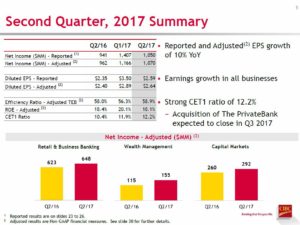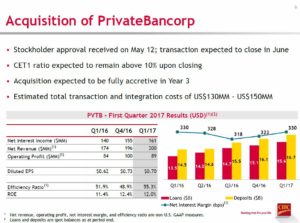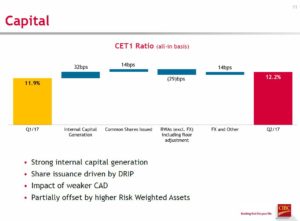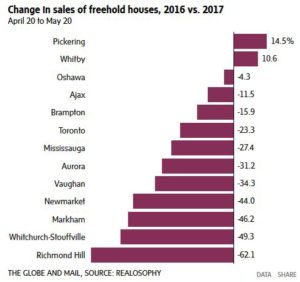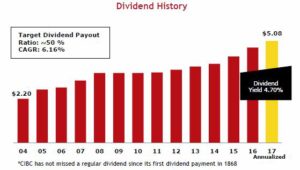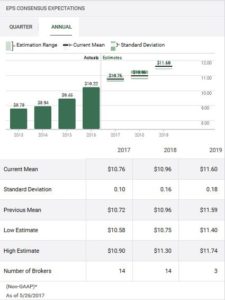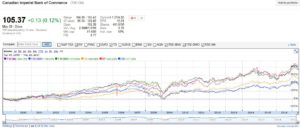Contents
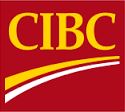 Summary
Summary
- This Canadian Imperial Bank of Commerce Stock Analysis is the fourth of a 6 part series covering the Big 6 Canadian Banks.
- CM reported Q2 2017 results May 25th and its Liquidity Ratios continue to improve thus providing investors with assurances that it remains a safe bank.
- Growth in its residential real estate portfolio is outpacing that of its competition as a result of major changes it has made over the past few years in the manner in which it sources business.
- Pockets of the Canadian real estate market are wildly overheated but CM’s results indicate its real estate related loan portfolio is of sound quality.
- While CM is an attractive long-term investment with a history of having not missed a dividend payment since its first dividend payment in 1868, other Canadian FIs are better investments.
- I suspect we will experience a major market correction within the next 12 months and urge caution.
All figures are expressed in Canadian dollars unless otherwise noted.
Introduction
The Canadian Imperial Bank of Commerce (NYSE: CM), Canada’s 5th largest bank by market cap, reported Q2 2017 results on May 25th.
While I touch upon various topics that impact the Canadian Banking Sector and the top 6 Schedule I Canadian Banks, I strongly encourage you to listen to the CM segment of the March 29 and 30, 2017 National Bank Financial Markets – 15th Annual Financial Services Conference. There is far too much information covered in this ~30 minute segment for me to give the content justice in this post.
Acquisition of PrivateBancorp Inc.
CM is making efforts to diversify its income by business segment and by geographical region since for several years CM’s clients have criticized it for not having US operations. In an effort to address its clients’ needs, CIBC announced at the end of June 2016 that it had entered into a definitive agreement to acquire PrivateBancorp, Inc. (NASDAQ: PVTB) (https://www.theprivatebank.com/) and its subsidiary, The PrivateBank, a high-quality Chicago-based middle market commercial bank with US$17.7B in assets, complemented by private banking and wealth management capabilities. At the time of this announcement, the deal was valued at roughly US$3.8B.
CM subsequently had to sweeten its offer and earlier in May 2017, PVTB’s shareholders approved the takeover valued closer to US$4.9B. CM also had to hike the cash portion of its cash-and-stock transaction.
The PVTB deal is expect to close in June 2017 and CM anticipates that PVTB will be accretive in year 3.
This acquisition will enable CM to expand its U.S. presence with high-quality middle market commercial and private banking capabilities, to advance its client-focused strategy, and to diversify earnings and to strengthen its platform for long-term growth.
The Canadian Banking Sector
Details on the Canadian Banking Sector can be found here.
Technological Innovation
Details about the Technological Innovation the Canadian banks are undertaking can be found here.
CM Overview
A very high level CM overview is available on CM’s Q2 2017 Corporate Fact Sheet which can be found here.
CM’s strategy is to build a strong, innovative, relationship-oriented bank. It is accelerating its transformation by concentrating on three strategic bank-wide priorities:
- Client focus – target to be #1 in client experience.
- Innovation – innovate and continue to build on leadership position.
- Simplification – simplify the bank to make it easier to bank at CM and to make it easier to get work done thus allowing the bank to redeploy resources for reinvestment in the business for future growth and improved efficiency.
Q2 2017 Financial Results
Readers are encouraged to review CM’s May 25, 2017 Earnings Release and to listen to the conference call.
Capital Measure Ratios
In addition to touching upon the Capital Measure Ratios for CM, you can find more information here.
Recent Events in the Canadian Banking Sector
A brief overview about a few major Recent Events in the Canadian Banking Sector can be found here.
Inflated Real Estate Values
Given the impact the US real estate bubble had on the US Banking sector, it is only fair that people should be wondering what would happen to the Canadian financial institutions if the grossly inflated real estate values in various major centres in Canada were to experience a correction.
Multiple articles have been published about the state of certain pockets of the Canadian real estate market and how consumers are stretched financially. Recently, more articles have appeared about the sudden cooling of the real estate market.
In addition to my opinion on this topic which can be found here, I have very recently attended Open Houses (a community on the outskirts of Toronto) so I could speak with various real estate agents and brokers. All have indicated they have noticed a marked change in the last couple of months. Buyers appear to be less aggressive and in all cases, Open Houses are getting much less foot traffic. They have also commented that there is concern that some buyers may be willing to risk the loss of their deposit and will just walk away from their offers.
CM’s Canadian Real Estate Secured Lending and Personal Banking Portfolios
With all the concerns about the average Canadian consumer being stretched financially and the inflated real estate values in specific geographic pockets within Canada, the major Canadian financial institutions have provided more information regarding the composition of their respective real estate related loan portfolio.
CM has made significant progress in growing its Canadian real estate book relative to its peers. Historically it relied to some extent on its FirstLine Mortgages mortgage broker brand. It realized, however, that this was not a viable strategy to develop long-term profitable banking relationships in which customers used multiple CM products and services. After efforts to sell this business were unsuccessful, CM decided to wind down this business. After its experience in sourcing business through FirstLine, CM has no intention of growing its business through the purchase of mortgages in bulk from mono lines.
In order to grow its residential real estate market share, CM created a mobile sales force (about 1200 employees) who out “beating the bushes” for business. This sales force uses technology that allows them to go meet prospects where and when clients want. There is now a clear focus on building client relationships; CM has found that they are able to cross-sell roughly 7 products.
David Williamson, CM’s SVP and Group Head, retail and Business Banking, indicated during his segment of the National Bank Financial Markets – 15th Annual Financial Services Conference on March 30, 2017 that CM focuses on credit quality and is not reaching for business on the basis of price or on a loan to value basis. In fact, CM has the 4th largest book of real estate loan business in Canada and is a “price taker”. If its competition lowers its rates, CM does not follow immediately with lower rates but rather adopts a “wait and see” approach. Should the competition increase rates, CM generally immediately follows suit.
The following data was included in CM’s Q2 2017 Earnings report.
An encouraging note is that CM has lower 90+ days delinquency rates on Uninsured mortgages in the Greater Vancouver Area and Greater Toronto Area than the average of its peers.
Overall, CM’s Provision for Credit Losses and Loans 90+ days past due appear to be well controlled. Naturally, if we enter an economic downturn we can certainly expect to see an increase from current levels. At the moment, however, there is no cause for alarm but caution is definitely warranted.
Risk Management
There are a host of risks the Canadian financial institutions face. Global uncertainty, Brexit, Oil & Gas, Cyber risk, anti-money laundering, renegotiation of NAFTA, and the increasing complexity of regulation are just a few of these other risks.
Readers are encouraged to review the 30 page “Quarterly Slides” presentation found here as there are multiple pages that provide details addressing the quality of CM’s loan portfolio. There are also multiple pages in CM’s 2016 Annual Report addressing CM’s Risk Management. Page vii of the Annual Report lists the locations of the disclosures within the report.
Dividend
Unlike many foreign banks which were forced to dramatically reduce or suspend their dividend during the Financial Crisis, CM and its Canadian counterparts froze their quarterly dividend. In mid-2011, CM reinstated dividend increases.
CM’s dividend distribution history dating back to the beginning of 1997 can be found here.
On May 25, 2017, CM announced that its Board of Directors declared a dividend of $1.27 per share on common shares for the quarter ending July 31, 2017 payable on July 28, 2017.
CM has not missed a regular dividend since its first dividend payment in 1868. The likelihood of a dividend cut or elimination is remote so investors seeking a safe dividend and a respectable dividend yield (~4.8% as I compose this) would be well served acquiring CM shares at current levels.
Valuation
The current mean FY2017 adjusted EPS estimates from various brokers for fiscal 2017 is $10.76.
As I compose this post, CM is trading at ~$105.40 on the TSX thus giving us a forward PE of ~9.80. When I look at the high/low PE ratio levels for the past several years I view the current level as acceptable and would consider adding to our existing position. In fact, we DRIP all our CM dividends.
Canadian Imperial Bank of Commerce Stock Analysis – Final Thoughts
In my opinion, CM is not the most attractive Canadian financial institution from an investment perspective. Prior to retirement in 2016, I was employed in the Canadian FI space for almost 34 years. I have personally witnessed CM’s historical performance over the years and it has been less stellar. This is borne out in CM’s stock price over the years when compared to its peers.
I sincerely hope the PVTB acquisition works out well and view it as a huge positive. I would, however, have far preferred that CM acquire it at the original price. Unfortunately, the market has become overheated subsequent to the original offer and CM will now be paying significantly more than originally intended.
Readers may be concerned about CM’s rapid growth in the Canadian mortgage business. As noted earlier in this post, the growth in CM’s real estate book is the result of major changes made to this line of business. In addition, it is encouraging to note that CM is a “price taker” so it is not trying to grow market share on the basis of price or by taking on undue risk.
I currently own CM, albeit at a far lower average cost than current levels, and view CM as a core holding in what I think is a well-balanced and well-diversified portfolio. If you decide CM might hold a place in your portfolio, or if you already own CM, I think you can take some comfort that it is prudently managing its loan portfolio and has a strong capital base.
My major concern at this stage is that I suspect a major market pullback (also see here and here) will come about within the next 12 months. I, therefore, urge caution and suggest your purchases be made in small tranches. In the event a major market correction materializes, you can certainly open your pocketbook to acquire CM but you may want to look at NYSE: RY, NYSE: TD, and NYSE: BNS beforehand.
Note: I appreciate the time you took to read this article and hope you got something out of it. As always, please leave any feedback and questions you may have in the “Contact Me Here” section to the right.
Disclaimer: I have no knowledge of your individual circumstances and am not providing individualized advice or recommendations. I encourage you not to make any investment decision without conducting your own research and due diligence. You should also consult your financial advisor about your specific situation.
Disclosure: At the time of writing this post I am long CM, RY, BMO, TD, and BNS.
I wrote this article myself and it expresses my own opinions. I am not receiving compensation for it and have no business relationship with any company whose stock is mentioned in this article.


